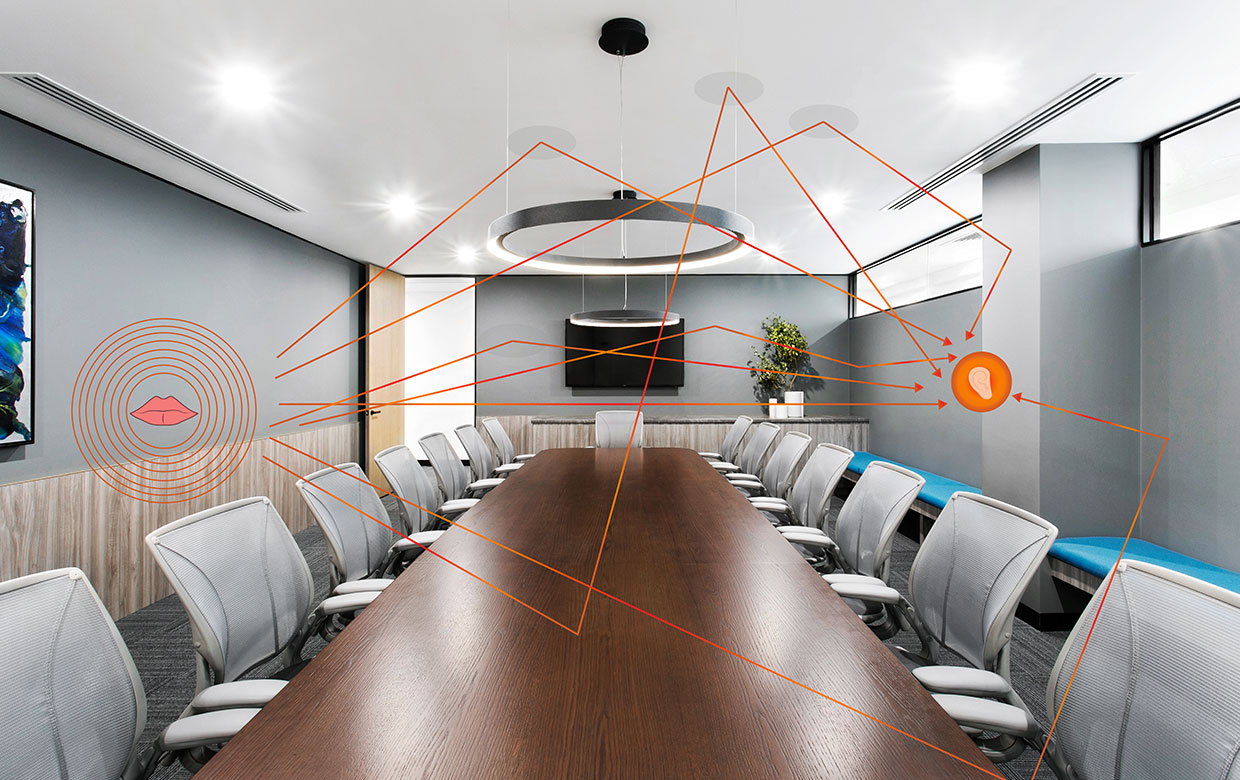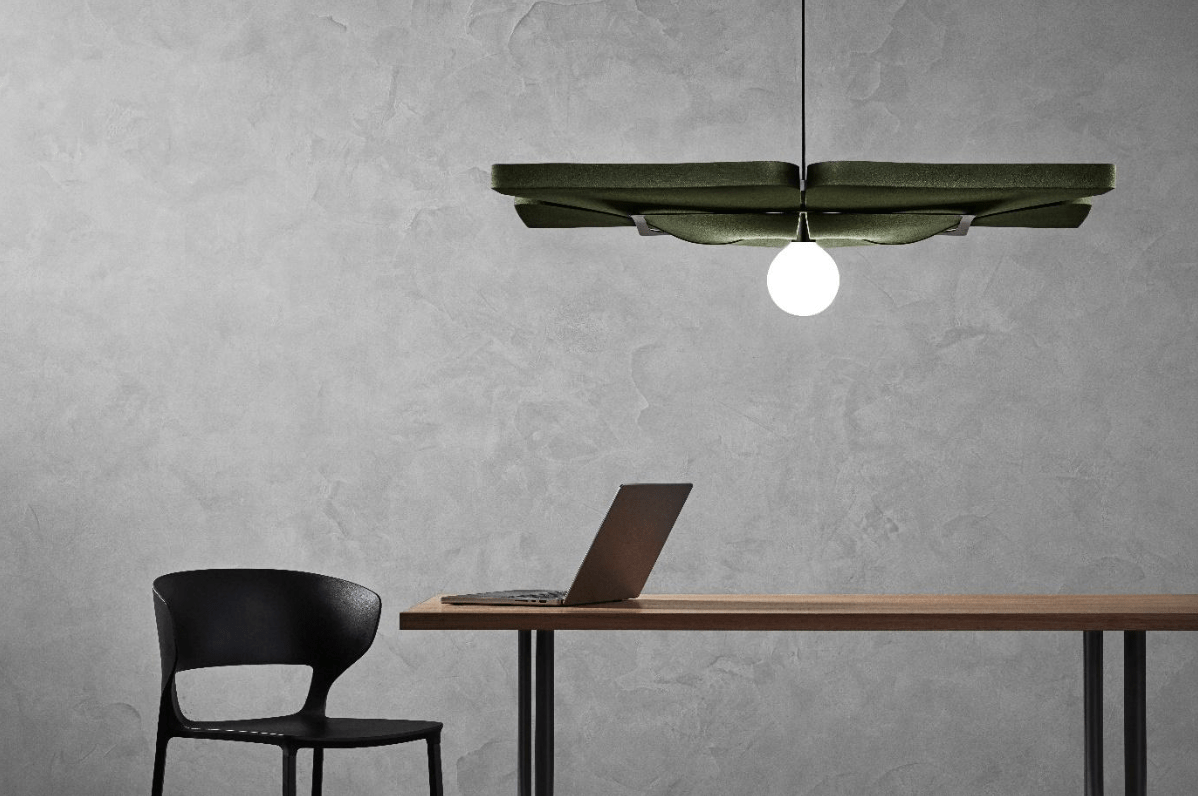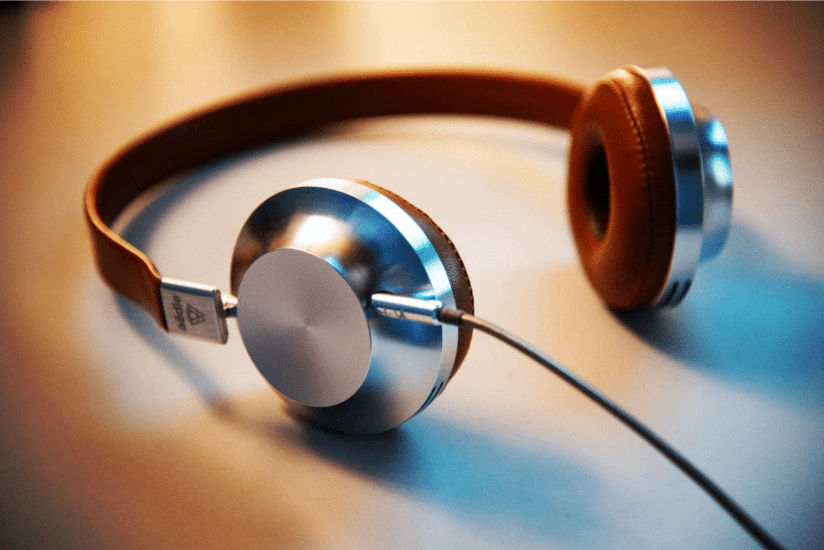
Interpreting sound is instinctive, but understanding the science behind it is incredibly beneficial. To help, we’ve summarised the basics of how sound is produced and how it travels, so that you can create optimal, peaceful spaces.
What is Sound?
‘Sound’ is a vibrational wave of pressure that travels from a source to our ears. It is, in essence, a rapid alternation of vibrations and silence.
‘Loudness’ and ‘tone’ are the two main attributes of sound. We measure these in Decibels and Hertz.
Measurements of Sound
The decibel (dB) is the easiest and a most convenient way to measure the physical pressure of a sound. The common audible range is around 0 – 120db. This is based on a logarithmic scale. Because some sounds emit very low decibels, they fall outside of the common conscious hearing range. Our unconscious mind picks up these frequencies and still tries to process it while our focus is elsewhere…. Think of it like a program running in the background of your computer.
Frequency is the ‘tone’ or ‘pitch’ of a sound. Think about the difference between a man’s deep, rumbling voice and a shrill, screechy voice of a child.
Its particularly important to think about frequency when working with spaces that involve computers and machines. We can generally hear sounds between about 20 Hz and 20000 Hz, but some people are far more sensitive than others. That’s why it is crucial to use adequate equipment to measure frequencies and decibels – rather than using your own judgement.
Reverberation
In a room, sound waves travel by repeatedly bouncing off the walls, ceiling, floor and furniture. A wave can bounce up to 56 times in a typical boardroom. Depending on the absorbency of the materials in the room, the waves will keep bouncing and echoing around until they dissipate into silence. The way we measure this is called Reverberation Time.
More specifically, reverberation time is defined as the time it takes for sound to decrease by 60 dB. For example, if the sound in a room took 7 seconds to decay from 100dB to 40dB, the reverberation time would be 7 seconds.
Large empty rooms with hard surfaces typically have the greatest reverberation times. Think school hall, warehouse or restaurant with high ceilings – where there’s plenty of space for sound to travel. Reverberation time can be reduced by positioning absorbent materials correctly, so that sound paths are interfered with.
Absorption
When a sound wave hits a surface, some of the energy penetrates the material and is turned into heat, while the rest of the sound wave is reflected back into the room. We can measure the level of absorbency of a material by calculating the amount of heat energy that is converted. Softer materials and objects like curtains, carpet and couches – even people absorb sound.
By correctly placing absorbing materials in strategic locations around a room, noise is significantly reduced. The goal is to intercept the waves where they travel, making a hanging pendant or wall mount perfect for placement.
By understanding these basic principles, we can begin to take measures to combat unwanted noise in any space.
For more advice on the benefits of acoustic treatment and correct placement and size for your room, contact samantha@acusticolighting.com and subscribe to our blog.
References:
Kadam, V and Nayak, R 2016, ‘Basics of Acoustic Science’ in R Padhye, R Nayak (ed.) Acoustic Textiles, Springer, Singapore, pp. 33-42.Gracey, B. (2018).
Sound Absorption and related terms, definitions, units etc., : Acoustic Glossary. [online] Acoustic-glossary.co.uk. Available at: http://www.acoustic-glossary.co.uk/sound-absorption.htm [Accessed 23 Aug. 2018].
Ecophon.com. (2018). Acoustics and Sound | Ecophon. [online] Available at: https://www.ecophon.com/en/acoustic-solutions/acoustic-knowledge-bank/Basic-Acoustics/ [Accessed 23 Aug. 2018].





